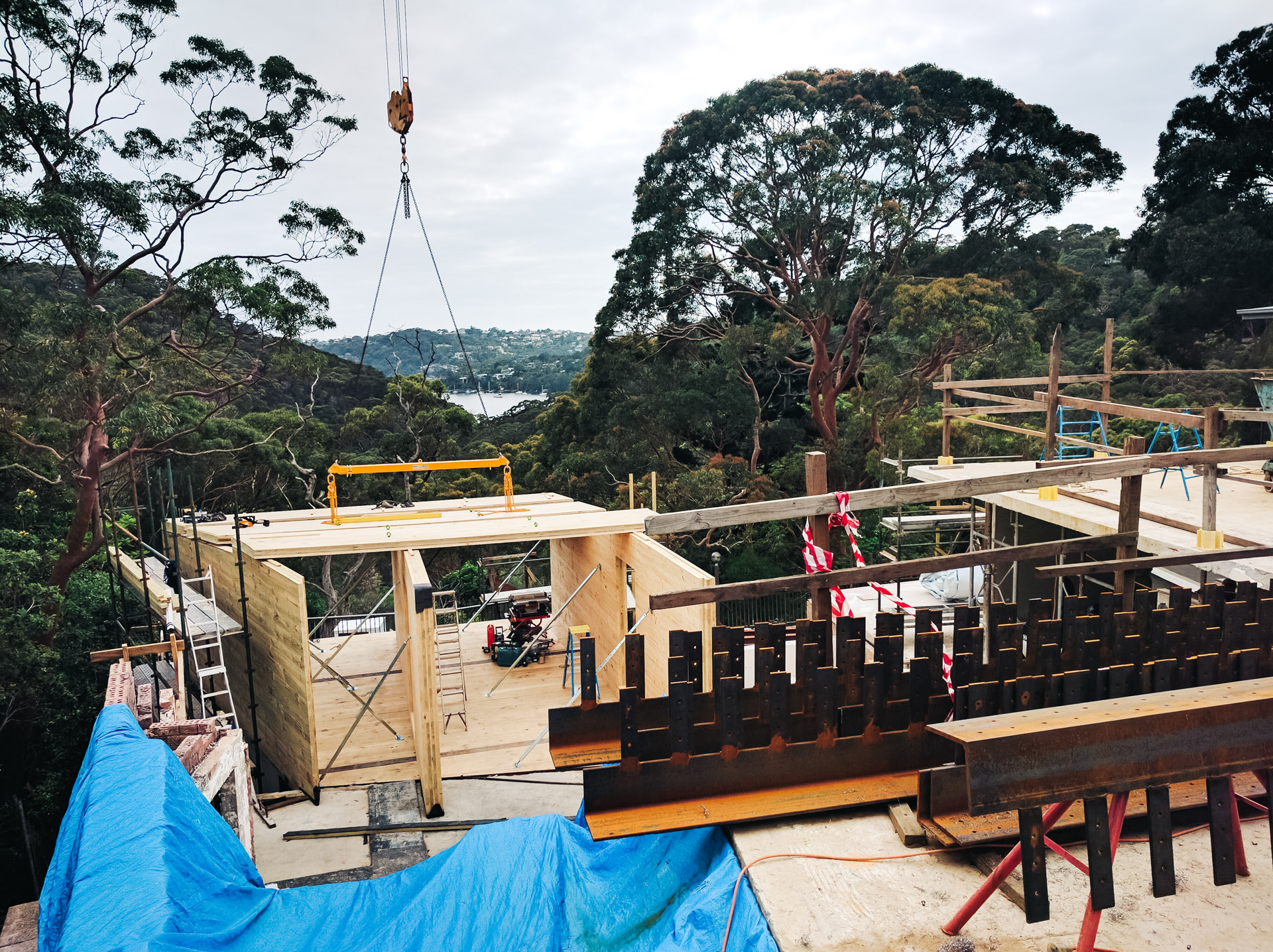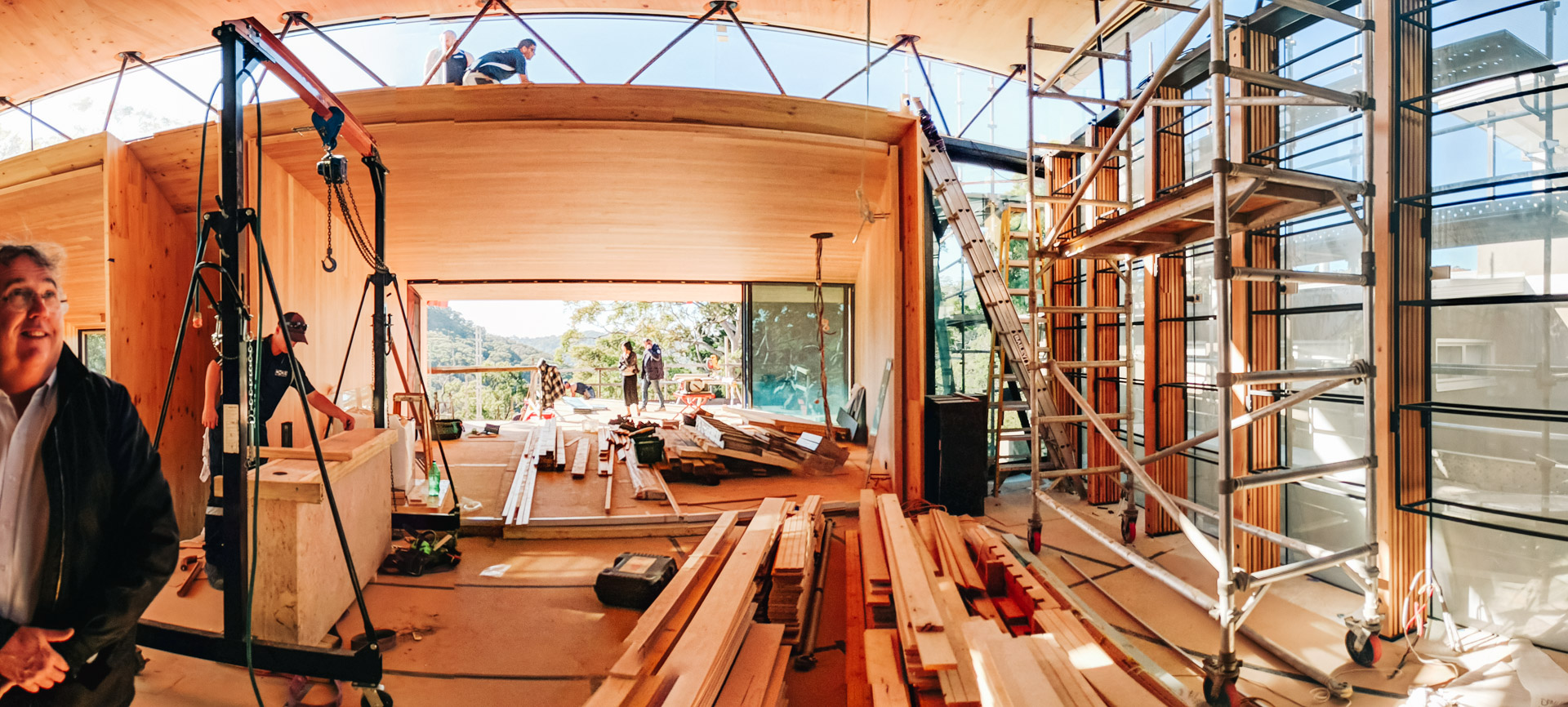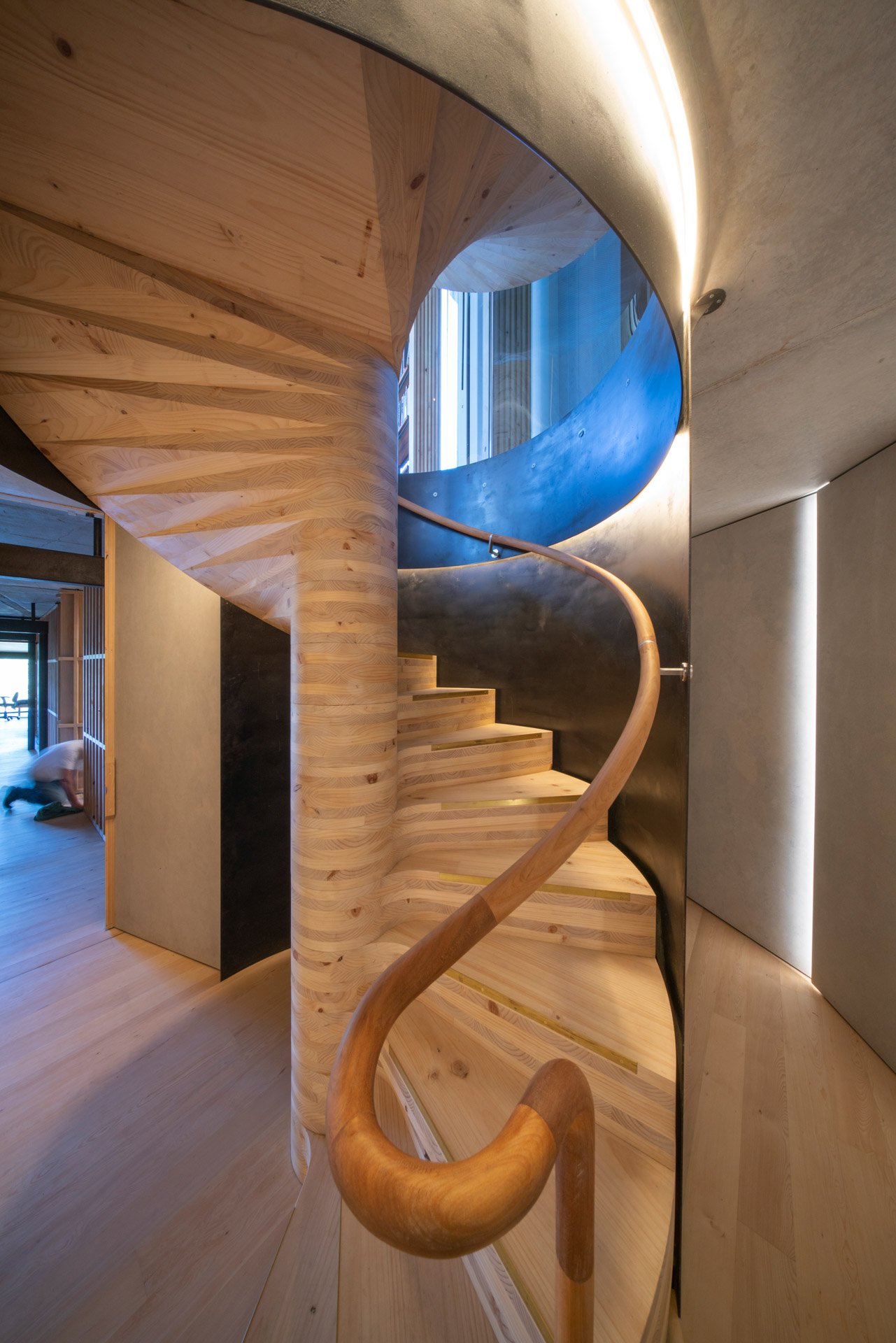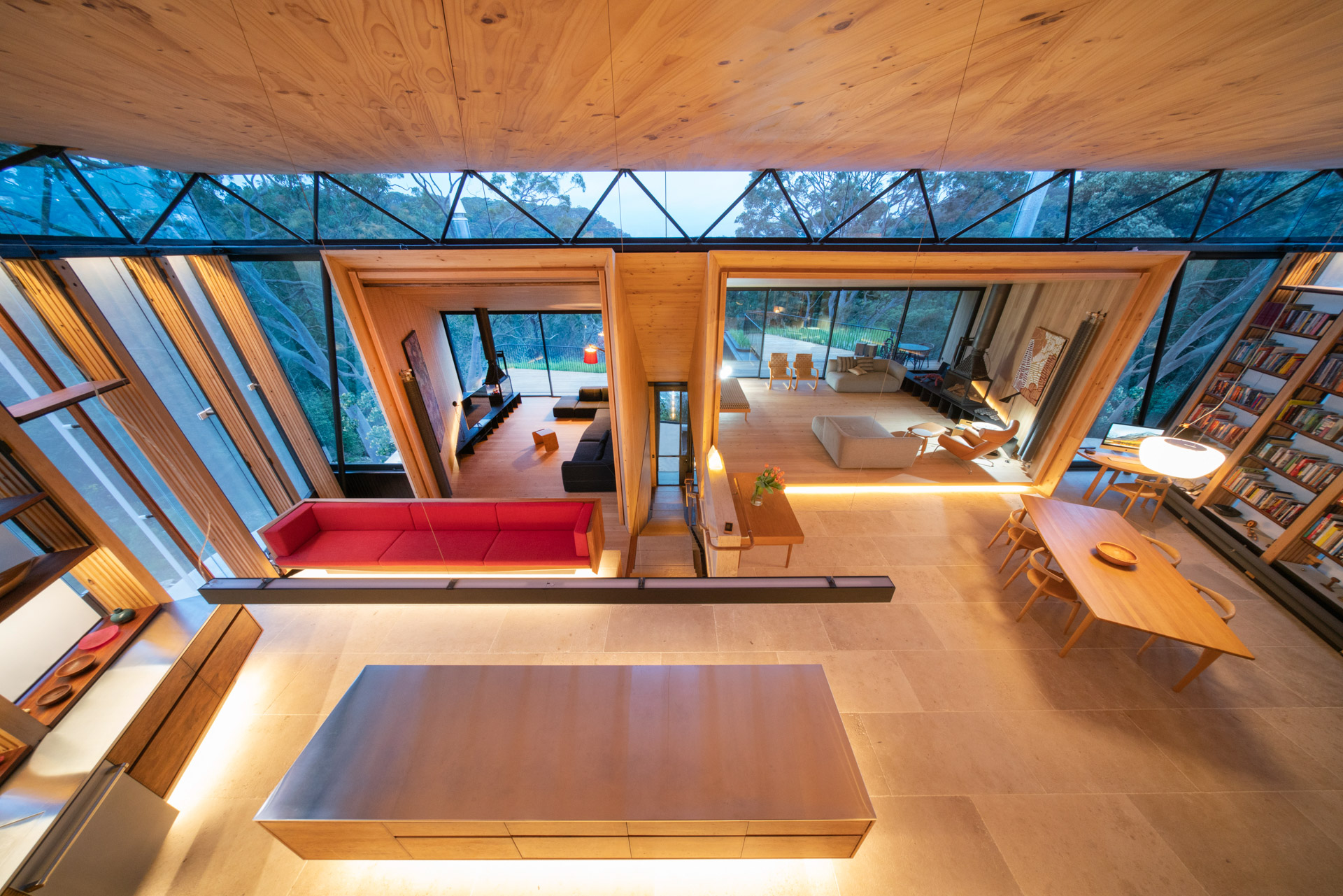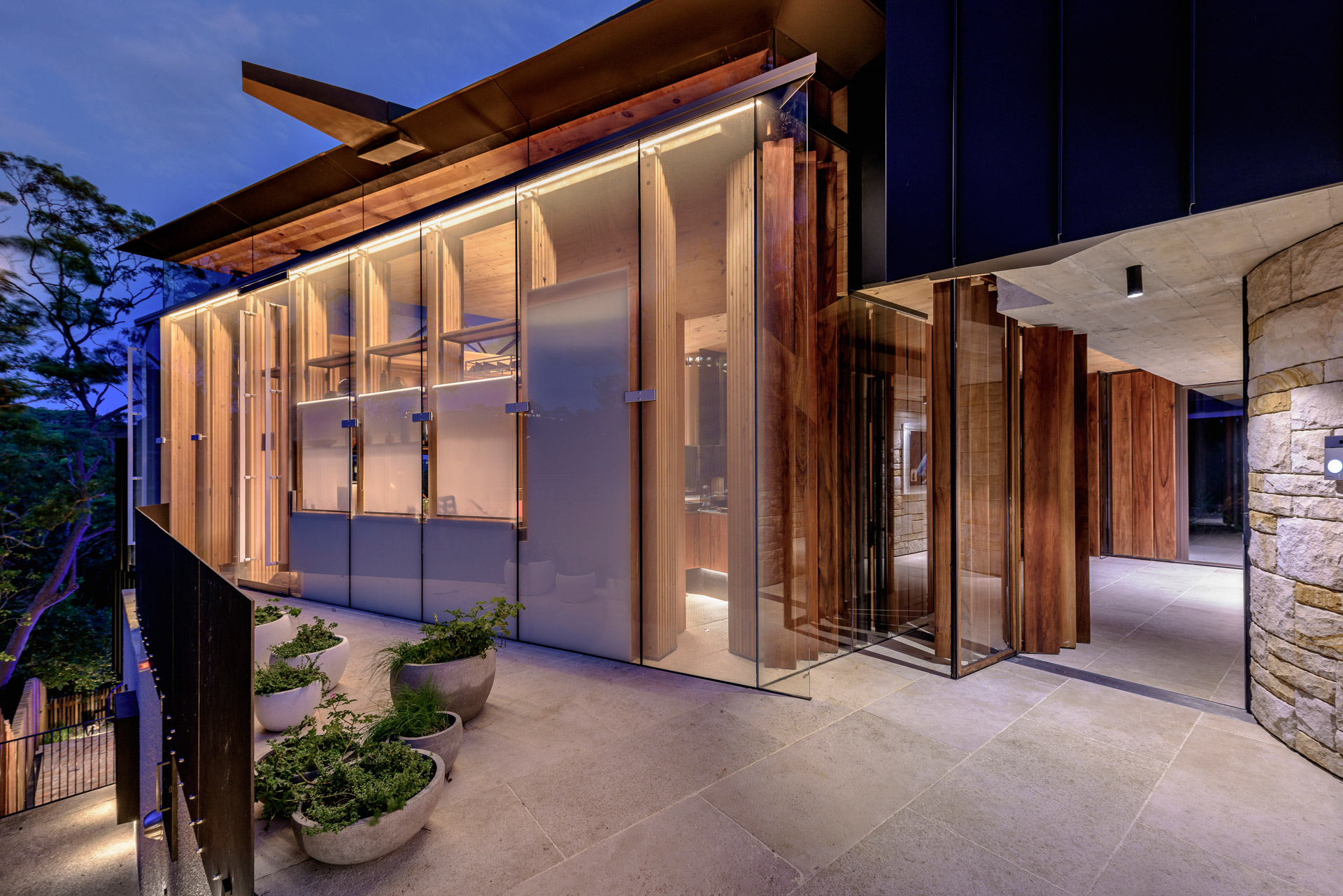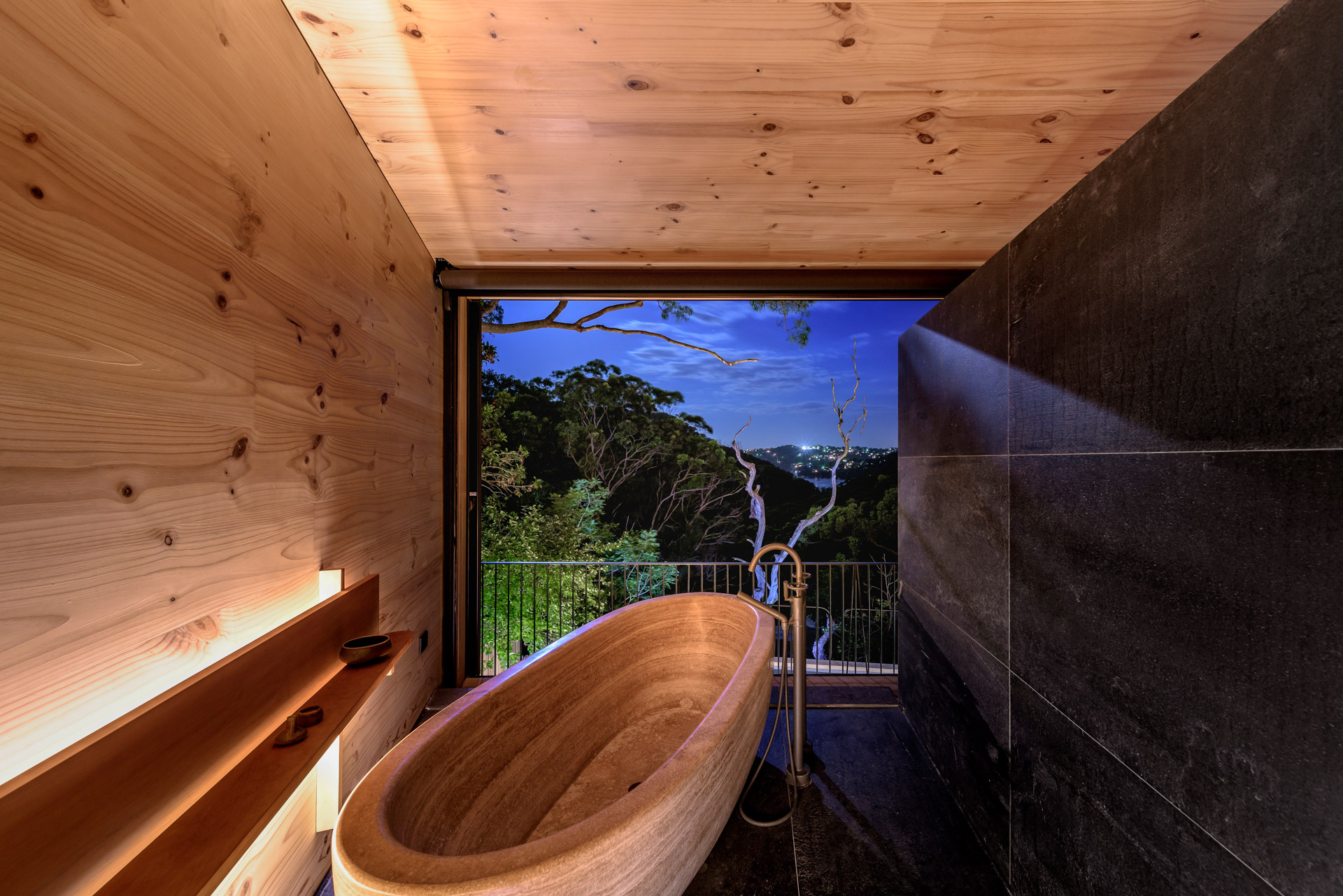An example of form, function and material coming together to create a peaceful space that blends seamlessly into the surrounding environment.
Seed House is a five-level development consisting of a part new build. Built predominantly in timber, the Cross Laminated Timber (CLT) panels were sourced locally and pushed to their absolute limits with the lower pods of the house extended as far out as possible on the steep construction site.The CLT structure has ambitious cantilevers exposed internally, with hidden wall to floor connections located within all exposed CLT elements. A highly architecturally refined roof truss supports the kitchen with a top chord of composite CLT and steel. Large cantilevers and thin elegant structure is showcased through the building, utilising hybrid structural steel components where possible.

A key feature to the house is the exposed CLT tread spiral case. Our TTW Advance investigated the design and concluded that the central timber "core" had to be reinforced by a hidden circular structural steel tube member. The impact on structural behaviour was investigated by comparing the response to loads for the cases of both, with and without the tube represented in the model. Each tread was CNC machined and connected using hidden screw locations. Each tread was threaded over a central slim steel circular hollow section, creating the timber core through the centre of the stair.
 The above image is a detailed finite element analysis of a CLT portal frame joint and the impact on global structural behaviour. The stability and robustness of the house relied almost entirely on the portal frames formed between the CLT floors and walls. The detailed joint analysis, investigated by our TTW Advance team, aided in estimating the joints' strength capacity and stiffness. This was then fed back into the global analysis to assess the structure's stability under gravity loads and drifts under wind loads.
The above image is a detailed finite element analysis of a CLT portal frame joint and the impact on global structural behaviour. The stability and robustness of the house relied almost entirely on the portal frames formed between the CLT floors and walls. The detailed joint analysis, investigated by our TTW Advance team, aided in estimating the joints' strength capacity and stiffness. This was then fed back into the global analysis to assess the structure's stability under gravity loads and drifts under wind loads.
The side walls wrapping the CLT cantilevered pods used both the longitudinal layer direction and the transverse layer direction, acting as very deep beams to cantilever off steel portal frames.
Our engineers undertook vibration studies of the panels to ensure the bounciness of the cantilevered edge was minimised. CLT panels were created as a portal frame to stabilise the pod against lateral loads. The portal frame connection used a stiff steel angle and double fully-threaded screws.
